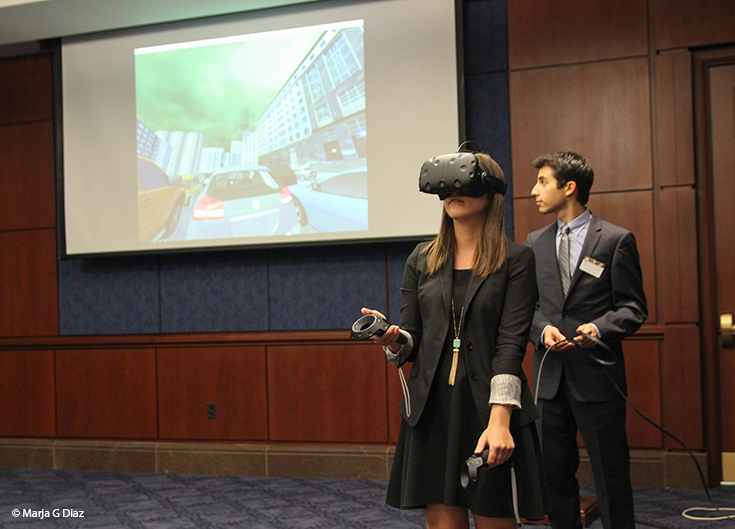Swimming with Senators
Published by Ocean Conservancy
Last week, Ocean Conservancy brought the ocean into the Senate.
You can imagine my confusion when I was asked to help.
It made sense once I learned Ocean Conservancy and the Stanford Virtual Human Interaction Lab were teaming up to bring the issue of ocean acidification to the Capitol. We would use virtual reality–as in that over-the-face simulation technology you keep hearing about—to submerge Senators and staffers underwater. If policy makers couldn’t get to the ocean, we would bring the ocean to Washington D.C., in hopes of leveraging virtual reality’s immersive nature to inspire much-needed change for our ocean.
I arrived at the Capitol building at 3:00 pm, where I (naturally) volunteered for a test run. A mask-like contraption was placed over my eyes, accompanied by a sensor in each hand. I was underwater by 3:08 pm.
It was the first time I had been two places at once.
The experience began at a traffic light, watching carbon emissions spew from exhaust pipes. As I bent down and touched the vehicle in front of me, the scenery changed. Technically, I knew my feet were planted in the Capitol building, yet all I could see was ocean floor. To my sides were ocean beds and coral teeming with life. Above me, the sun’s rays broke through ripples in the water. The technology was tracking my movements, allowing me to interact, explore and feel the 360 degree environment.
The fun was short-lived. Suddenly, the lively reef was replaced by a desolate wasteland of dead coral, muted colors and empty waters—the devastation caused by ocean acidification, or the increased absorption of carbon dioxide into the ocean, creating a more acidic environment.
We can’t all dive off the Italian coast. We can’t all experience coral reefs first hand. But what if you could swim through bleached reefs without leaving your home? What if you could see the devastation of ocean acidification for yourself? At the Senate, under those goggles, the problem was real. It was right there.
The Senators and staffers were up next. Seeing such astonished reactions reinforced the use of virtual reality to help decision-makers see the changes occurring in our ocean. It led me to wonder: What would happen if virtual reality was made accessible to public schools or afterschool programs? And what is its potential to change the minds of millions of Americans that don’t live on the coast?
At the end of the video, staring out into lifeless waters, a narrator’s voice cautions, “soon the ocean will look like this, unless we take action”. Here at Ocean Conservancy, we are taking action, like educating the public with new technology. We are pushing for science-based solutions and finding ways to take action at all governance scales. The Stanford Human Interaction lab is taking action by spreading awareness on the current and future state of the ocean. Will you join us?
Many thanks to Jeremy Bailenson, Shawnee Baughman, Elise Ogle and Tobin Asher from the Stanford VHI Lab, UC Santa Cruz scientist Kristy Kroeker and her team for the amazing footage and Senator Whitehouse for serving as honorary host for this wonderful event.
Read the full article at: http://blog.oceanconservancy.org/2016/09/24/swimming-with-senators/




